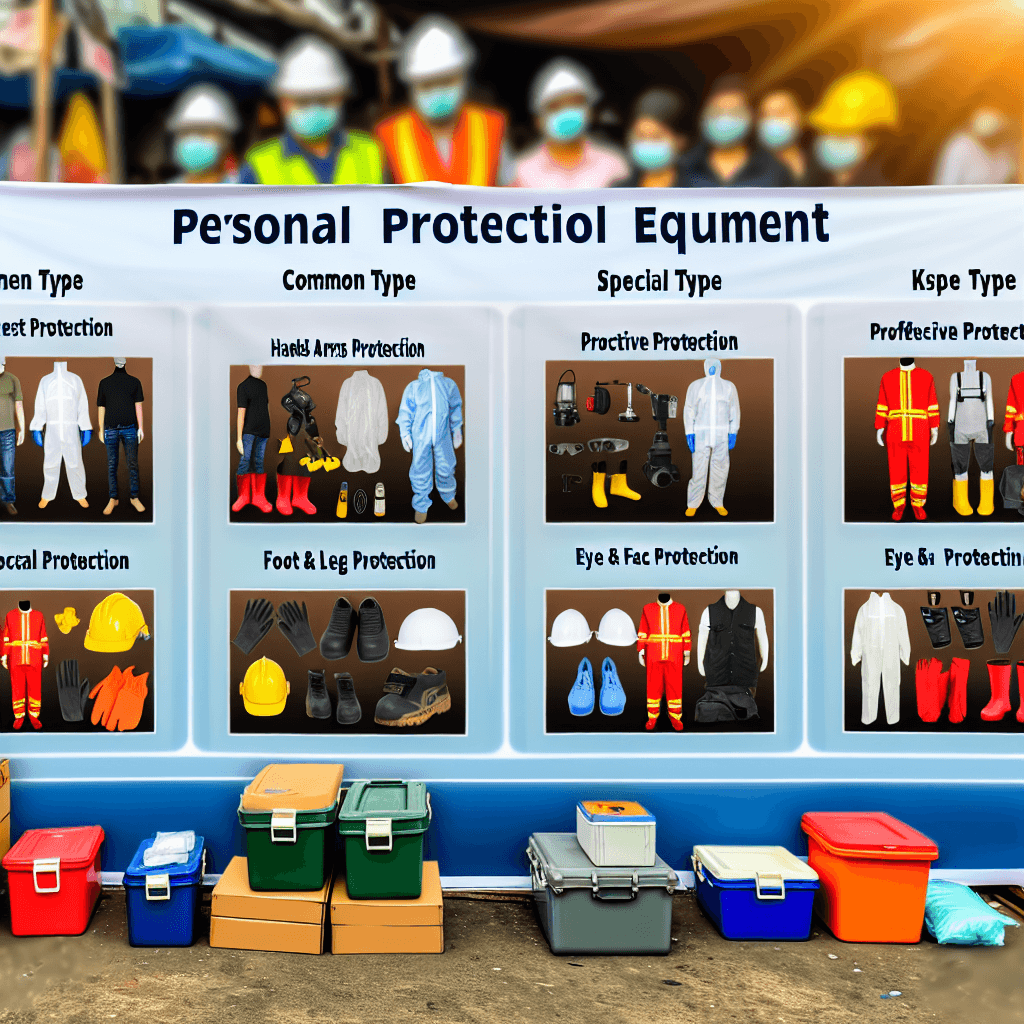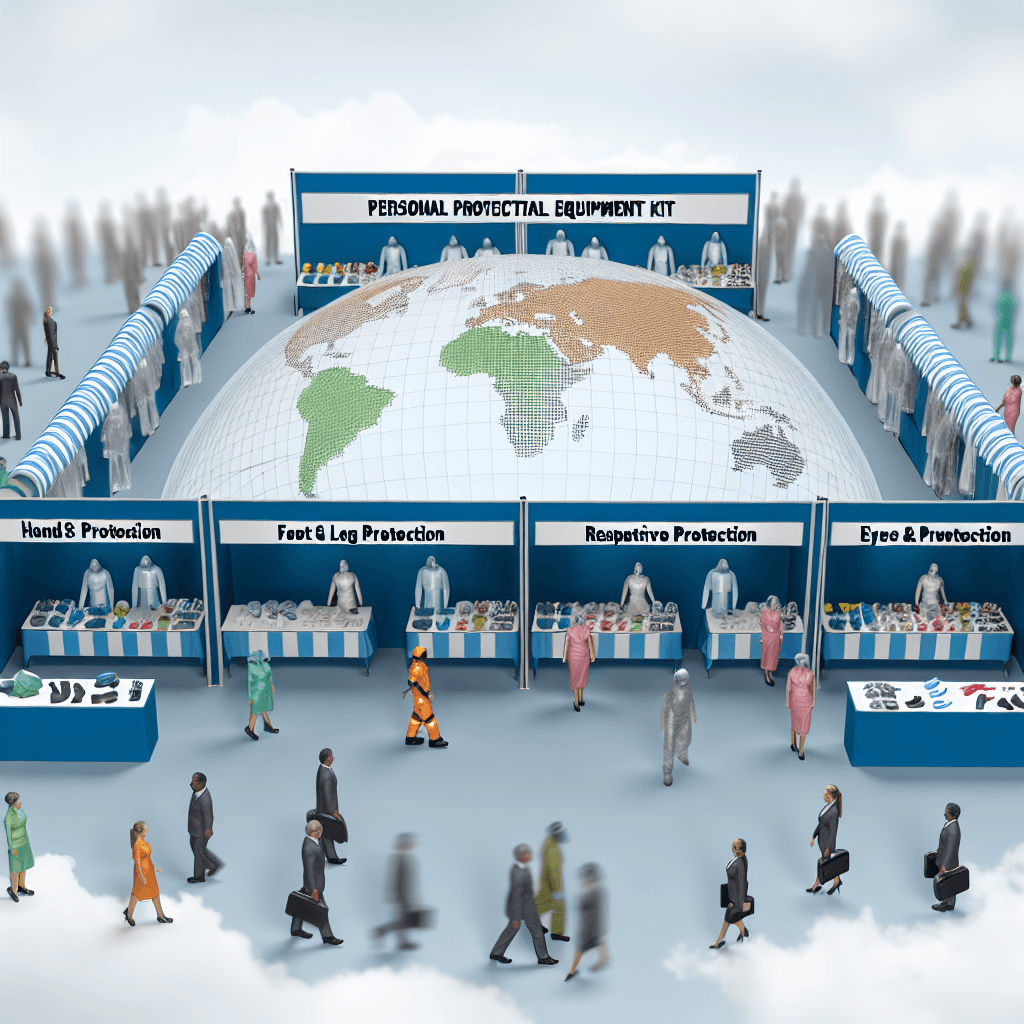Explore the global Personal Protective Equipment Kit market size segmented by product, type, application, and region, with growth forecasts.
Global Personal Protective Equipment Kit Market Size By Product (Hands & Arm Protection, Protective Clothing, Foot & Leg Protection, Respiratory Protection, Eye & Face Protection, Head Protection, And Others), By Type (Common Type Kits And Special Type Kits), By Applications (Manufacturing, Construction, Oil & Gas, Healthcare, Transportation, Firefighting, Food, And Others), By Geographic Scope And Forecast

Table of Contents
Exploring the Global Personal Protective Equipment Kit Market: Trends and Forecasts

The global market for Personal Protective Equipment (PPE) kits has witnessed a significant surge, especially in the wake of the COVID-19 pandemic. These kits, essential for safeguarding individuals from various hazards, are increasingly being adopted across multiple sectors. This article delves into the PPE kit market, examining its size by product, type, application, and geographic scope, and provides a forecast for its future growth.
Market Overview
The PPE kit market encompasses a range of products designed to protect users from injuries or infections. The demand for these kits has escalated due to heightened awareness of workplace safety and stringent regulatory standards mandating the use of protective gear in specific industries.
Product Segmentation
The PPE market is segmented based on the type of protection provided. Each segment caters to specific protective needs in various working environments:
- Hands & Arm Protection: Includes gloves and arm guards used in sectors like manufacturing and healthcare to prevent cuts, abrasions, and chemical exposures.
- Protective Clothing: Encompasses garments like overalls, aprons, and lab coats designed to protect against hazardous materials or extreme weather conditions.
- Foot & Leg Protection: Consists of items such as safety boots and leggings, crucial in construction and manufacturing for protecting against falls and heavy machinery.
- Respiratory Protection: Includes masks and respirators used primarily in healthcare and industrial applications to shield against airborne contaminants.
- Eye & Face Protection: Comprises safety goggles and face shields used in various industries to prevent injury from chemical splashes, particles, and infectious materials.
- Head Protection: Involves helmets and hard hats essential in construction and mining to protect against head injuries.
- Others: Includes hearing protection and ergonomic gear among other types.
Type of Kits
PPE kits are broadly categorized into:
- Common Type Kits: These are standard kits suitable for general safety in environments like workshops or construction sites.
- Special Type Kits: Tailored for specific industries or hazards, such as chemical-resistant kits for the chemical industry or heat-resistant clothing for firefighters.
Application Areas
The application of PPE kits spans across various industries, reflecting the diverse nature of hazards present in different work environments:
- Manufacturing: Workers are equipped with PPE to protect against machinery, hot surfaces, and hazardous substances.
- Construction: Essential for protecting against falls, debris, and electrical hazards.
- Oil & Gas: Specialized PPE is necessary to handle oil spills, fires, and chemical risks.
- Healthcare: Critical for infection control, particularly in the context of viral outbreaks like COVID-19.
- Transportation: Includes high-visibility clothing and protective gear for handling cargo.
- Firefighting: Requires fire-resistant clothing, helmets, and breathing apparatus.
- Food: Ensures sanitary conditions are maintained to prevent food contamination.
- Others: Includes sectors like mining, chemical, and agricultural industries.
Geographic Scope
The demand for PPE kits varies by region, influenced by factors such as industrial activity, regulatory policies, and awareness about workplace safety:
- North America: A leading market due to stringent regulatory standards and high awareness about occupational health.
- Europe: Similar to North America, with robust regulations and a focus on reducing workplace accidents.
- Asia-Pacific: Fast-growing due to industrialization, particularly in countries like China and India, and improving standards of workplace safety.
- Latin America and Middle East & Africa: Gradually adopting more stringent safety standards, thus driving the demand for PPE.
Market Trends and Future Outlook
The PPE kit market is expected to continue its growth trajectory, driven by several key trends:
- Technological Advancements: Innovations such as wearable technology and improved material science are enhancing the effectiveness and comfort of PPE.
- Regulatory Enforcement: Governments worldwide are tightening safety regulations, which compels industries to comply with PPE standards.
- Health Pandemics: Outbreaks like COVID-19 have underscored the critical importance of personal protection to prevent disease transmission.
Moreover, the increasing investment in R&D activities by major players and the rising awareness about the importance of workplace safety are expected to fuel the market’s expansion.
Conclusion
The global PPE kit market is poised for robust growth, propelled by increasing awareness of workplace safety, regulatory mandates, and technological advancements in protective equipment. As industries continue to emphasize safety and health standards, the demand for PPE kits across various sectors is expected to rise, ensuring a dynamic and evolving market landscape.
Understanding these trends and market dynamics is crucial for stakeholders and businesses aiming to navigate the complexities of the PPE industry and leverage opportunities for growth and innovation.








